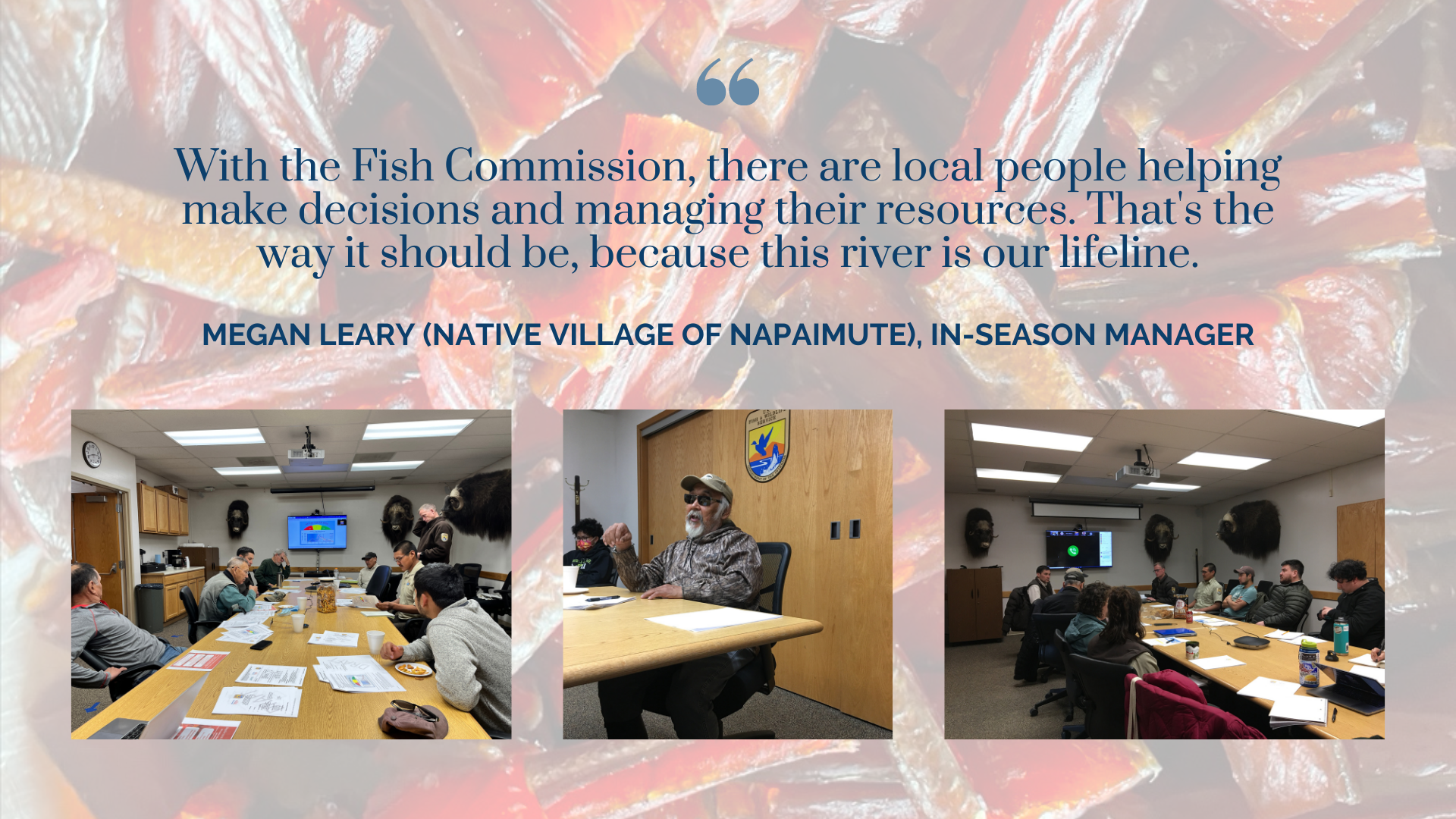History & Mission
The Kuskokwim River Inter-Tribal Fish Commission (KRITFC) was established in 2015 as part of the long-standing desire of Kuskokwim River tribes and rural residents of the Kuskokwim River drainage to engage as co-managers of the fisheries resources.
In 2016, a Memorandum of Understanding (MOU) was adopted between the KRITFC and the U.S. Fish and Wildlife Service (USFWS) as one part of the Kuskokwim River Partnership Project, an effort to meaningfully integrate Kuskokwim River tribes and rural residents into federal fisheries management on the Kuskokwim River. The goal was to cooperatively manage Kuskokwim River Chinook salmon stocks and to ensure a more self-determined management structure.
Click here to read about the signing of the MOU with USFWS in May 2016.
Kuskokwim River watershed.
Where We ARe
The Kuskokwim River, located in southwestern Alaska, is 700 miles long with a drainage area of 48,000 square miles. It is the longest free flowing river in the United States and is the ninth largest by average discharge. The headwaters of the Kuskokwim River drain the western slopes of the Alaska Range, but the majority of the river is more of a meandering channel. The river supports annual runs of pink, chum, coho, sockeye, and king salmon, as well as other species important for subsistence and sport harvests.
Why We Are
The Kuskokwim has historically supported the largest subsistence salmon harvest amounts in Alaska, with one of every two king salmon harvested by a subsistence user being harvested on the Kuskokwim (see ADF&G). In recent years, however, king, chum, and coho salmon species have been in rapid decline due to a wide range of variables, including climate change, competition in the marine environment, multi-jurisdictional boundaries, differing approaches between state and federally-managed waters, and increased competition between user groups.
KRITFC was established as a response to this decline and for the purpose of developing one management system on the Kuskokwim River. The goal is to rebuild the salmon resources to support and preserve a way of life that is vital for people’s nutritional, economical, cultural, and spiritual needs. KRITFC is committed to conserving, restoring, and providing for tribal use of fisheries based on Indigenous knowledge systems and scientific principles.
““The people of the Kuskokwim River are no longer satisfied with serving in an advisory role to state and federal fishery managers.” ”
Who We Are
KRITFC Member Tribes are: Nikolai, Telida, McGrath, Takotna, Georgetown, Stony River, Sleetmute, Crooked Creek, Napaimute, Chuathbaluk, Upper Kalskag, Lower Kalskag, Aniak, Tuluksak, Akiak, Akiachak, Kwethluk, Bethel, Napaskiak, Napakiak, Atmautluak, Kasigluk, Eek, Cherfornak, Kwigillingok, and Quinhagak.
(Currently, the communities of Lime Village, Red Devil, Oscarville, Kongiganak, and Kipnuk do not have Authorizing Resolutions or voting members with KRITFC. If you are a Tribal administrator from one of these communities and would like to appoint a voting member to KRITFC, contact us at info@kritfc.org.)
KRITFC is headquartered in Bethel, Alaska, and has six full-time staff members. It also has an Executive Council, 5 In-Season Managers & Fish Commissioners from the 33 federally recognized Tribes on the Kuskokwim River.











Guiding principles and values
Unity: Consensus driven discourse and decision making
Sharing in abundance and scarcity: With families, community members, and people in need
Respect for all life: Respect for fish, ecosystems, and users
Stewardship for our ancestors and our future generations: Honoring our spiritual connection and responsibilities to past and future generations.
Reflections and governance values from our 2018 Annual Meeting.
Mission
To be the voice of the Kuskokwim, living and sharing our traditional ways of life.
Vision
Sovereign Indigenous Stewardship.




